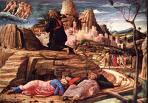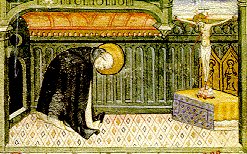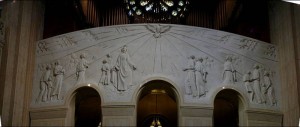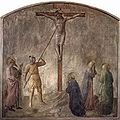This Lent, Archbishop Wuerl extended an invitation to those who have been away from church to come back and to attend Mass. (For more information, visit www.Maybe-it’s-God.org.)
Did you invite someone to Mass this Lent? Were you respectfully, or not so respectfully, declined? For some people, there may be a vast difference between not going to Mass and going to Mass. Perhaps, some are more comfortable easing into the Faith.
For example, why not bring a friend to Conversations beginning next Wednesday? It’s being held at Busboys and Poets, which boasts an excellent restaurant and chic lounge. The format for the evening is pure Q&A, and there will be two panelists who will discuss whatever questions the audience has. It will be a casual atmosphere yet will provide an in-depth look at some of the most controversial teachings of the Catholic faith. It may be the first step on someone’s journey back to the Church!
Wednesday April 29th – Sex and Birth Control
Wednesday May 6th – Same-Sex Attraction
Sponsored by the Office of Young Adult Ministry of the Archdiocese of Washington
For complete information on Conversations, visit our News and Events page.




 At a talk with a group of young adults, someone asked about the history of the Stations of the Cross and I did not have an answer! I certainly pray the Stations of the Cross and when I go into a church for the first time, I like to take a look at that Church’s stations because there are such a wide variety of styles. When I was a student in Rome, one of my most memorable experiences was praying the Stations of the Cross at the Roman Coliseum on Good Friday with Pope John Paul II. Pope John Paul had the practice of inviting different groups of people to write the reflections to accompany the stations. The year I participated, he had invited Catholic journalists to be the writers. One of my housemates who wrote for a German Catholic newspaper was chosen as a writer. For all of the discussions we had about the Stations of the Cross as we helped her prepare, you would think I would have learned something about their origin.
At a talk with a group of young adults, someone asked about the history of the Stations of the Cross and I did not have an answer! I certainly pray the Stations of the Cross and when I go into a church for the first time, I like to take a look at that Church’s stations because there are such a wide variety of styles. When I was a student in Rome, one of my most memorable experiences was praying the Stations of the Cross at the Roman Coliseum on Good Friday with Pope John Paul II. Pope John Paul had the practice of inviting different groups of people to write the reflections to accompany the stations. The year I participated, he had invited Catholic journalists to be the writers. One of my housemates who wrote for a German Catholic newspaper was chosen as a writer. For all of the discussions we had about the Stations of the Cross as we helped her prepare, you would think I would have learned something about their origin.